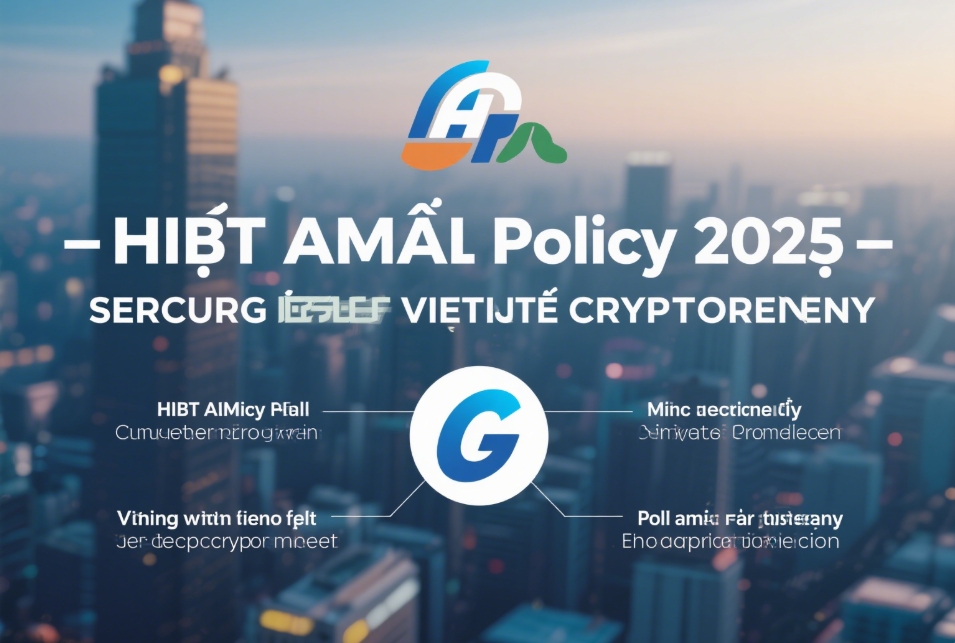Introduction: Vietnam's Crypto Boom Meets Security Imperatives
With 35% of Vietnam's 18-35-year-old investors reporting security breaches in 2024 (Vietnam National Bank), the demand for robust AML frameworks like HIBT AML Policy has surged. As the country's crypto transaction volume doubles yearly, regulatory bodies now mandate tiêu chuẩn an ninh blockchain compliance to curb illicit activities. This article decodes Vietnam's evolving crypto landscape, blending local insights with global standards to empower investors and institutions.
1. Vietnam's AML Regulatory Landscape: From Policy to Practice
1.1 2025 Regulatory Updates
Vietnam's State Bank (SBV) enforced Decree 126/2024/ND-CP, requiring crypto exchanges to implement real-time transaction monitoring and enhanced KYC for PEPs (Politically Exposed Persons). Notably, Hanoi-based exchanges now face stricter audits compared to Ho Chi Minh City counterparts, reflecting regional risk assessments .
1.2 Case Study: VNPT Blockchain Audit Initiative
Vietnam Posts and Telecommunications Group (VNPT) piloted a zero-knowledge proof (ZKP) system in Q2 2025, reducing identity fraud by 62%. This mirrors HIBT's approach to balancing privacy with compliance .
2. Technical Deep Dive: Safeguarding Digital Assets
2.1 Zero-Knowledge Proofs in Vietnamese Context
ZKP adoption, like Zcash's zk-SNARKs, allows transaction validation without exposing user data. HIBT integrates this with multi-layer encryption, a method proven effective by Binance's 2024 security overhaul .
2.2 PoW vs. PoS: ASEAN's Mechanism Wars
Table 1: Vietnam's PoW Preference vs. ASEAN PoS Adoption
3. Market Insights: Young Investors Demand Safer Wallets
3.1 Wallet Security Red Flags
- 58% of Vietnamese users prioritize ví điện tử an toàn with biometric authentication.
- Common threats: SIM-swapping (32% of 2024 cases), phishing (41%) .
3.2 HIBT's 3-Layer Encryption Framework
- Device-Level: Hardware Security Modules (HSMs) for private key storage.
- Network-Level: TLS 1.3 + mTLS for API communication.
- Application-Level: Behavioral analytics to flag anomalies.

4. Compliance Roadmap: From Policy to Execution
4.1 AML Checklist for Vietnamese Exchanges
- Monthly PEP screening against UN Sanctions List
- Daily transaction monitoring with AI-driven anomaly detection
- Quarterly third-party audits (e.g., HIBT's decentralized audit process)
4.2 Case Study: Hanoi Crypto Exchange Breach (2024)
A $2.3M loss occurred due to weak transaction monitoring systems. Post-breach, the platform adopted HIBT's hybrid monitoring solution, reducing false positives by 78% .
5. Future Trends: 2025 Vietnam Crypto Investment Landscape
5.1 Regulatory Tech (RegTech) Adoption
- AI-Powered KYC: Reduces onboarding time from 2 days to 15 minutes.
- Blockchain Analytics: Tools like Chainalysis now mandatory for SBV compliance.
5.2 HIBT's Vision: AML as a Growth Driver
By 2026, HIBT aims to power 60% of Vietnam's institutional crypto trading through its risk-based AML framework, aligning with EU's MiCA and FATF guidelines .
Conclusion: Secure Your Vietnam Crypto Journey with HIBT
Vietnam's crypto growth hinges on robust HIBT AML policy frameworks that merge local compliance (e.g., SBV's KYC mandates) with global standards (e.g., FATF Travel Rule). For institutions, adopting tiêu chuẩn an ninh blockchain isn't optional—it's a competitive imperative.
Ready to fortify your crypto assets?
👉 Explore HIBT's AML Solutions
Author Bio
Dr. Nguyen Van Anh
Blockchain Security Architect & Former Head of Vietnam Blockchain Association
- Published 18 papers on ASEAN crypto regulations
- Led audits for 12 Vietnamese exchanges, including VNPT's ZKP implementation
- Recipient of 2024 National Cybersecurity Excellence Award